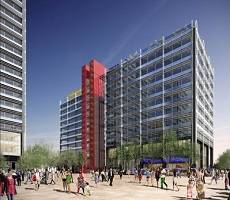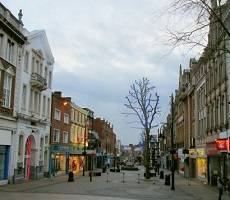June 11, 2015
US Govt passes legislation to reduce the amount of office space it occupies
 Over the past few years, the UK Cabinet Office has looked to the way it procures and occupies real estate as an important way of reducing the country’s budget deficit. One other country that is following suit is the US. The congressional Transportation and Infrastructure Committee of the US House of Representatives has unanimously approved legislation to reform the way federal office space is managed, procured and occupied. The Public Buildings Reform and Savings Act of 2015 sets out ways to reduce and consolidate space, divest unnecessary buildings, improve oversight of facilities management, negotiate better and shorter lease terms with the aim of saving billions of dollars each year. In the UK, the Government claims to have reduced the public sector estate by 2 million sq ft in just three years with a range of similar approaches, saving around £1.2 billion.
Over the past few years, the UK Cabinet Office has looked to the way it procures and occupies real estate as an important way of reducing the country’s budget deficit. One other country that is following suit is the US. The congressional Transportation and Infrastructure Committee of the US House of Representatives has unanimously approved legislation to reform the way federal office space is managed, procured and occupied. The Public Buildings Reform and Savings Act of 2015 sets out ways to reduce and consolidate space, divest unnecessary buildings, improve oversight of facilities management, negotiate better and shorter lease terms with the aim of saving billions of dollars each year. In the UK, the Government claims to have reduced the public sector estate by 2 million sq ft in just three years with a range of similar approaches, saving around £1.2 billion.






 TechNorth, the Manchester based technology hothouse devised as a regional counterbalance to London, is held in higher regard than the capital’s flagship TechCity development, according to research from recruitment firm Robert Half. The study of IT decision makers across the UK claims that the vast majority would prioritise working with Northern firms over their London counterparts, with 87 percent either ‘highly likely’ or ‘somewhat likely’ to place work with IT businesses in the TechNorth hub rather than those in TechCity London given the choice. The figure is 100 percent for IT leaders based in the North and to 95 percent for those in Scotland. More surprisingly, 80 percent of those based London and the South East said they would prioritise TechNorth, as did 75 percent in the South West and Wales.
TechNorth, the Manchester based technology hothouse devised as a regional counterbalance to London, is held in higher regard than the capital’s flagship TechCity development, according to research from recruitment firm Robert Half. The study of IT decision makers across the UK claims that the vast majority would prioritise working with Northern firms over their London counterparts, with 87 percent either ‘highly likely’ or ‘somewhat likely’ to place work with IT businesses in the TechNorth hub rather than those in TechCity London given the choice. The figure is 100 percent for IT leaders based in the North and to 95 percent for those in Scotland. More surprisingly, 80 percent of those based London and the South East said they would prioritise TechNorth, as did 75 percent in the South West and Wales.




























June 22, 2015
Too much sitting down at work (or worrying about it) can increase anxiety
by Sara Bean • Comment, Flexible working, News, Wellbeing, Workplace
More →